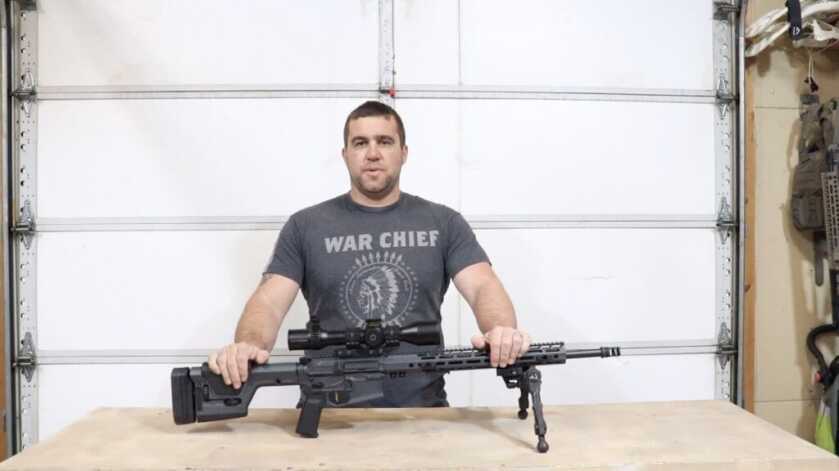
The gun world has changed a lot in the last 10 years, and I would argue in the most part for the better. Not only has the top-end product become near magical, but even the entry-level equipment has grown by leaps and bounds. In the current market Before the great gun rush of 2020, the spread of AR rifles you could purchase was staggering. (It will be staggering again, it’s just gonna take a minute to catch up.) At sub $1000 you have very decent options such as the SIG Tread and the Springfield Armory SAINT Victor. And above that, you can find anything you can dream of.
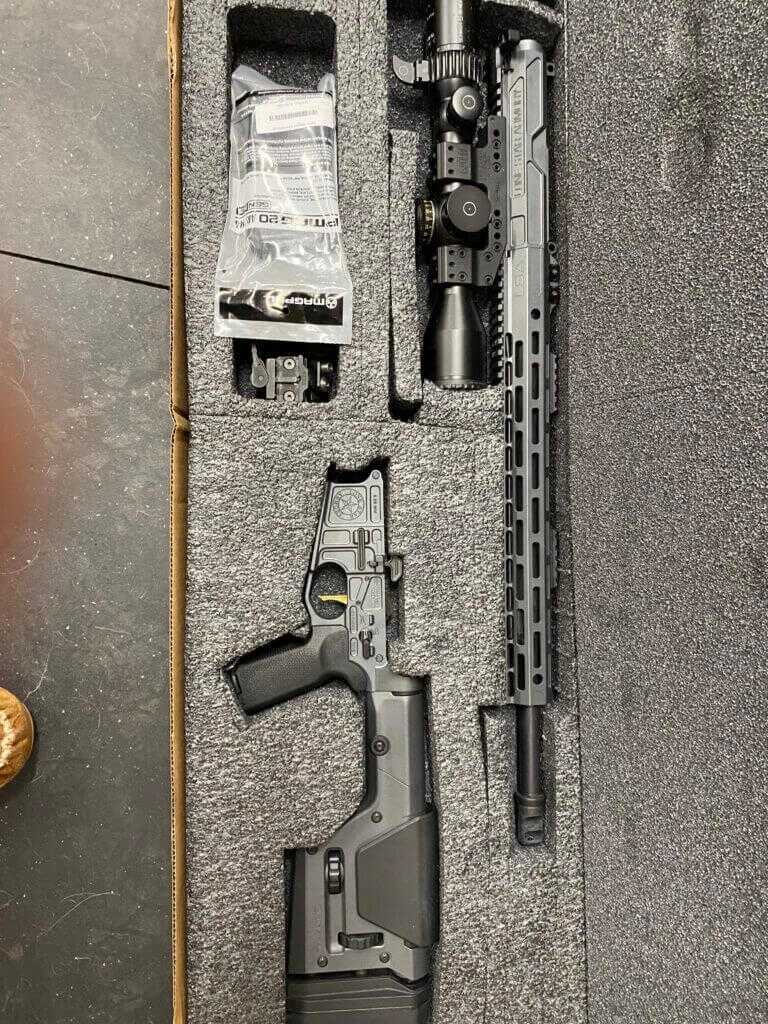
Today, we are taking a look at that “dream of” part. One of the other things we have seen on the rise is smaller, boutique rifle makers, creators of products that are stunning in detail. From Lone Star Armory, we got our hands on the TX15 Designated Marksman Light. Lone Star Armory (LSA) is a company many of you are not familiar with. Founded in 2006 in Fort Worth, TX, LSA set out to be something different.
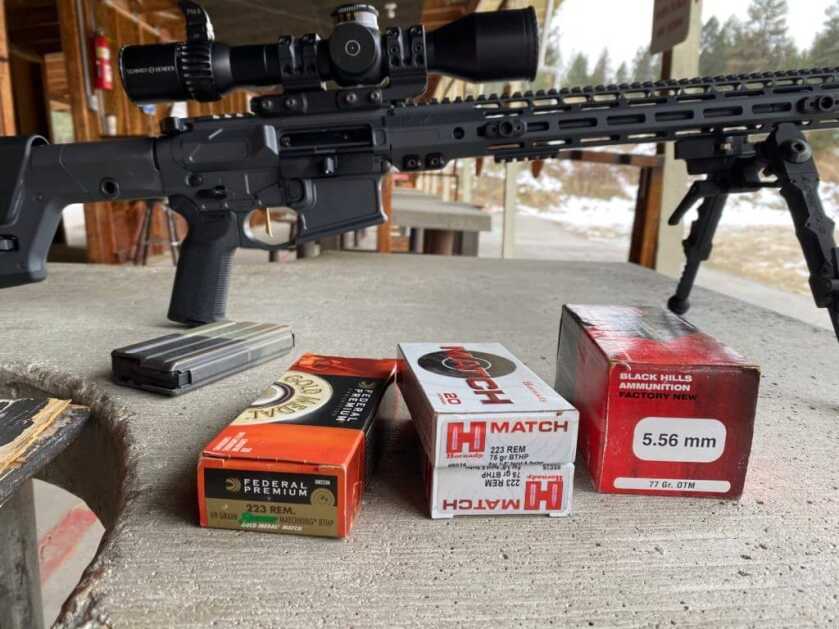
Gun manufacturers come from a wide cross-section of America, for certain. But if you want someone truly dedicated to detail, you would be hard-pressed to match the President and Founder Andrew Brady. Growing up in auto racing and competitive shooting, Brady understands the ins and outs of mechanical systems. How minor tolerance and angle changes can improve systems, and what it takes to test those to be sure you are right. Add to that combat tours with the 82nd and 25th Infantry, and you get a person that truly understands a weapon has to be reliable and dependable.
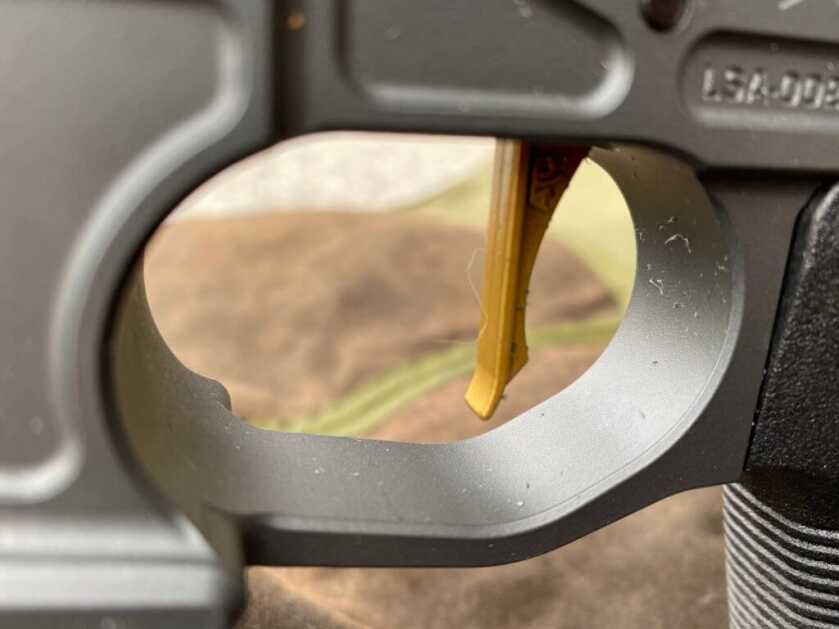
LSA takes this to heart, creating every part in-house that they can. Billet receivers are cut in their own shop, everyone under the watchful eye of master machinists. Handguards are in-house as well. Cerakote, a specialty of LSA, isn’t outsourced, it is done on sight. Barrel blanks are turned in-house to ensure quality is never compromised.
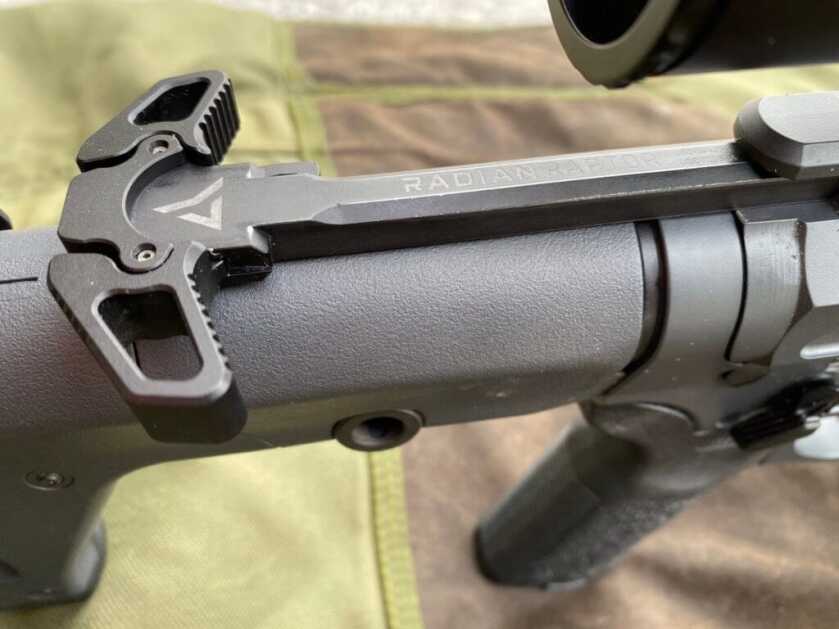
Now I’m going to be right upfront with you. This is a Gucci tier rifle we are looking at today. Even the cheaper end of Lone Star Armory starts at about $1700. And since we are doing a gun review on a new (to us) company, we didn’t go the cheap end. We went straight to the absolute top end of the small frame guns, which is the Designated Marksman Light. And the price tag here (as configured) is $3903.00. In American dollars.

So what does that get you? Well, for starters, a premium billet upper and lower receiver set. One thing we don’t talk about often in AR is receiver fit. The LSA ones you can tell are machined as a set. This rifle is incredibly tight, not a bit of slop in the tolerances here. Our test model also has lightening cuts taken to the extreme. The upper receiver has a profile similar to a tri cut 1911, though with 4 sides and a Picatinny rail on top. There is no forward assist, and the brass deflector has been reworked and minimized. All around the upper relief cuts have been further deepened, removing every bit of bulk possible. To include a large triangular cut on the left side to accommodate LSA’s own custom bolt release.
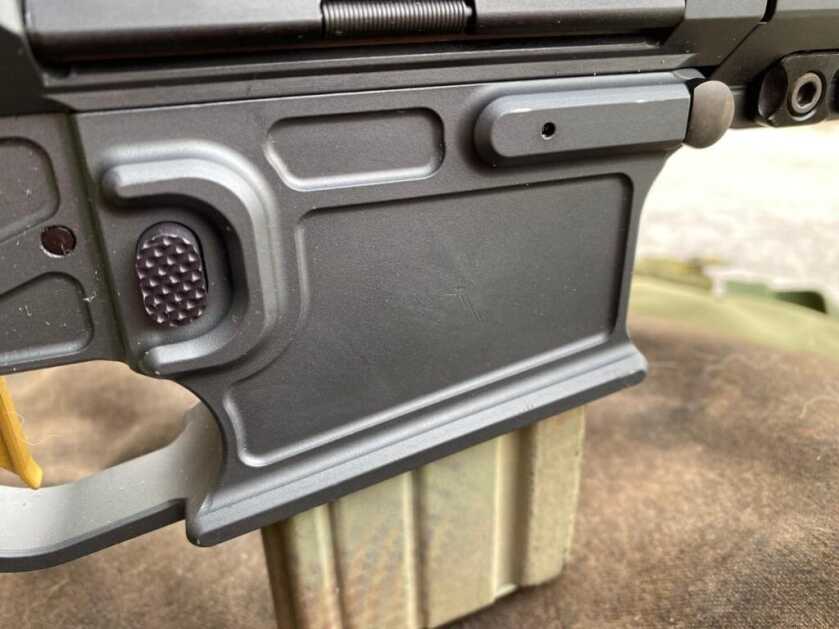
The lower has deep recesses shaved away as well. The edges of the mag well and around the mag release, as well as the channel for the front take down detent and spring, are true to mil-spec thickness. This lets you see just how much has been cut away elsewhere, a nice design choice. Even the magazine release catch has been lightened, which shows you the eye to detail.
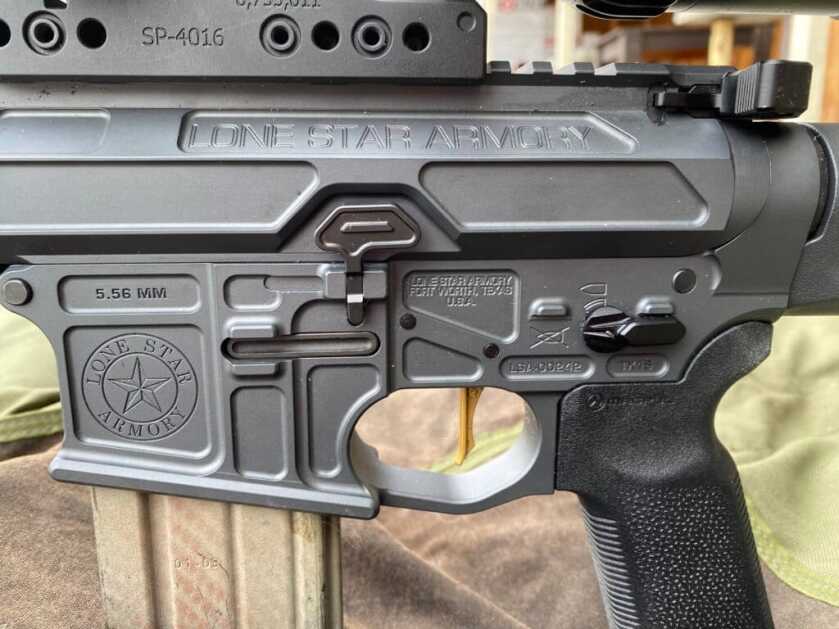
Because this is the Designated Marksman model, the buttstock is a Magpul PRS Gen 3. There are other fixed stocks on the market, but the PRS is very hard to beat for durability and utility. It is a little on the heavy side, but it also isn’t prone to shattering if you look at it hard. The pistol grip is a Magpul K2.
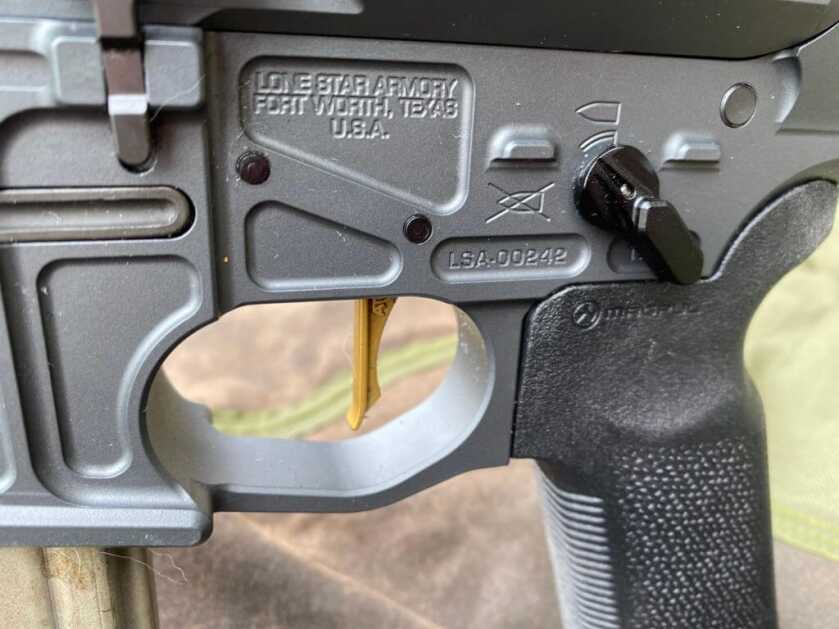
One of my favorite features in the lower is an AR Gold flat faced trigger. For my money, AR gold is the best on the market. With a tiny bit of zero ounce take up, the AR Gold defines a trigger that breaks perfectly. Nothing I have ever used is so clean and crisp. AR Gold also has a long-established reputation for durability. In a serious gun, that is not something to be overlooked. Paired with a 45-degree Ambi safety, I give LSA a 10/10 on fire control systems.
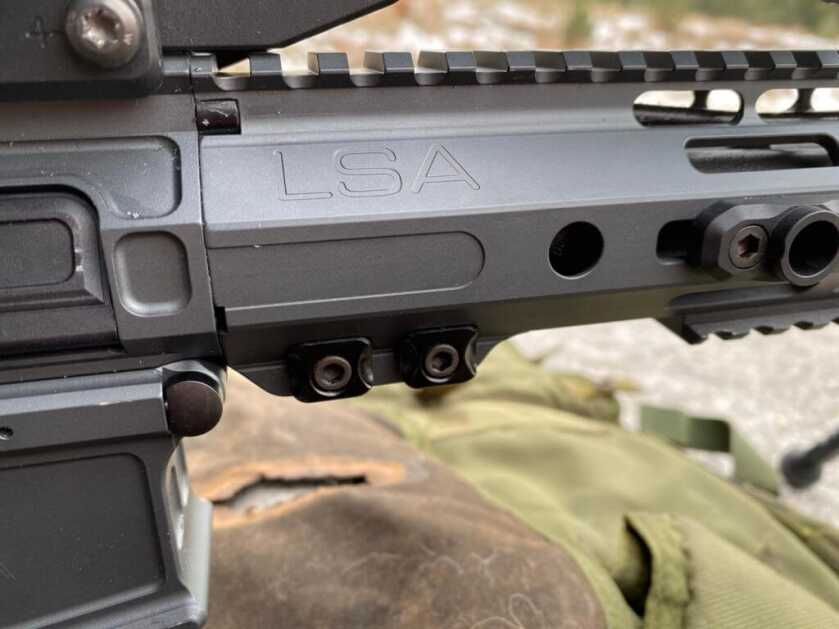
Upfront is a 16-inch M-Lok handguard, with an octagonal cut. This a great mix of comfort and utility. It is close enough to round that it is very comfortable to hold. But the flat edges are awesome for barricade shooting or field positions. Which is wrapped around the heart of the system, a medium contour Bartlein barrel. Bartlein is legendary for accuracy and quality, and I would expect no less at this price point. It comes with your choice of Dead Air, Surefire, or TBAC muzzle brake, and is suppressor-ready out of the box.
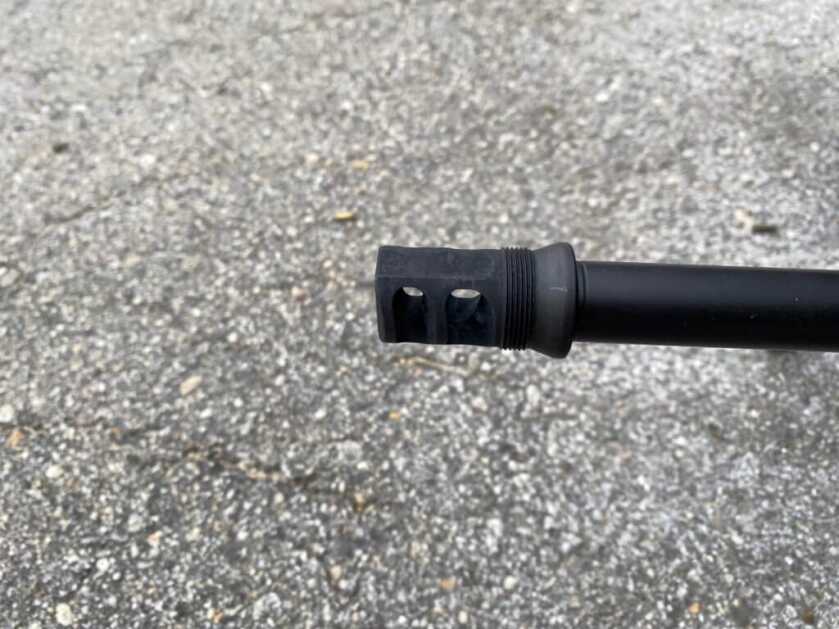
Performance, that is name of the game with a rifle like this. Given the specs, what and how did we test it? Normally with an AR, we use a scope to check accuracy, and then a red dot or LVPO for the bulk of the testing. However, given that our rifle was intentionally built as a Designated Marksman rifle, that didn’t really feel appropriate here. It is front heavy, thanks to the contour of the barrel, and isn’t what I would pick for something like 3 Gun. But, it should excel at its intended purpose.

Therefore, we opted only to test it for accuracy from the prone. It already had a Schmidt and Bender PM II on top, so no need to look for glass. For ammunition, we broke out the heavy hitters. Sig 77 match, Federal Gold Medal 69 grain, Black Hills MK262, and Hornady Match 75 grain.
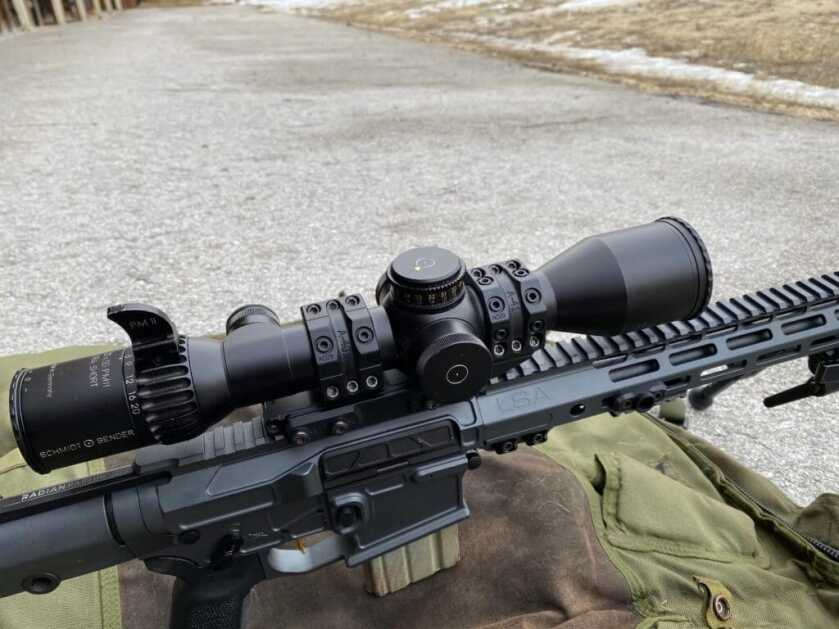
At 100 yards, we did have some impressive results. Keep in mind also, I shot this all in basically one string. No barrel cooling, no bullseye master Zen timeline to keep things on the rails. And our results give me mixed emotions. Hear me out, please:
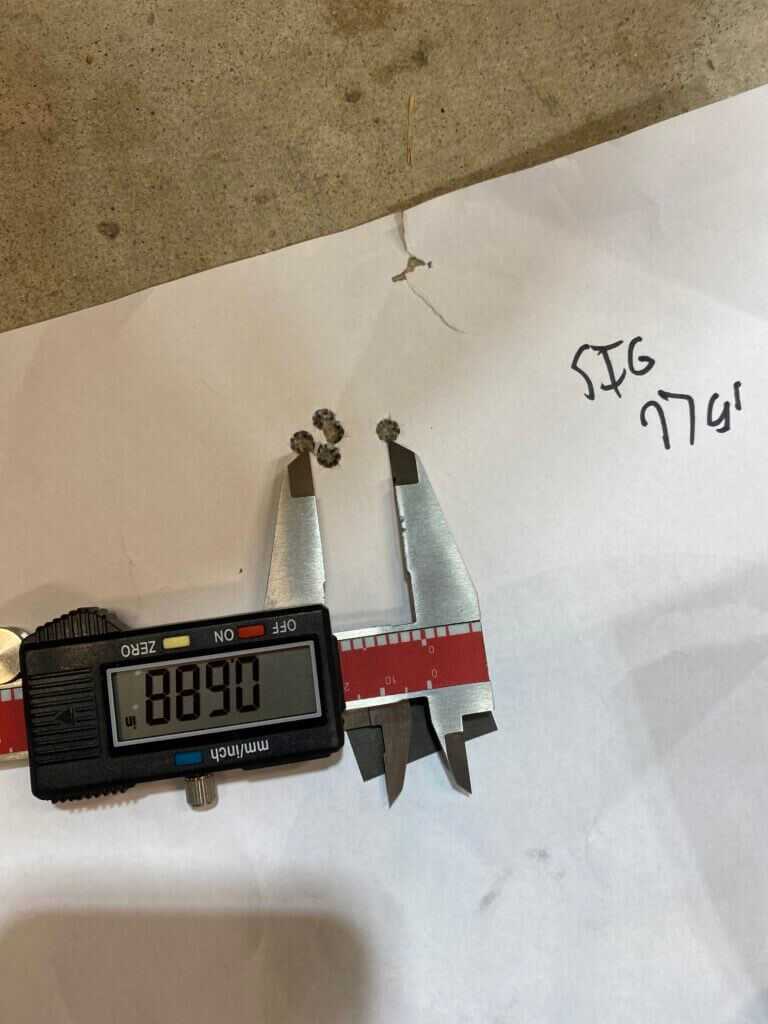
If you only wanted printed numbers, we averaged around .6 to .55 MOA. That included a 300-yard paper group, that measured just past ½ MOA with the Hornady 75 match.
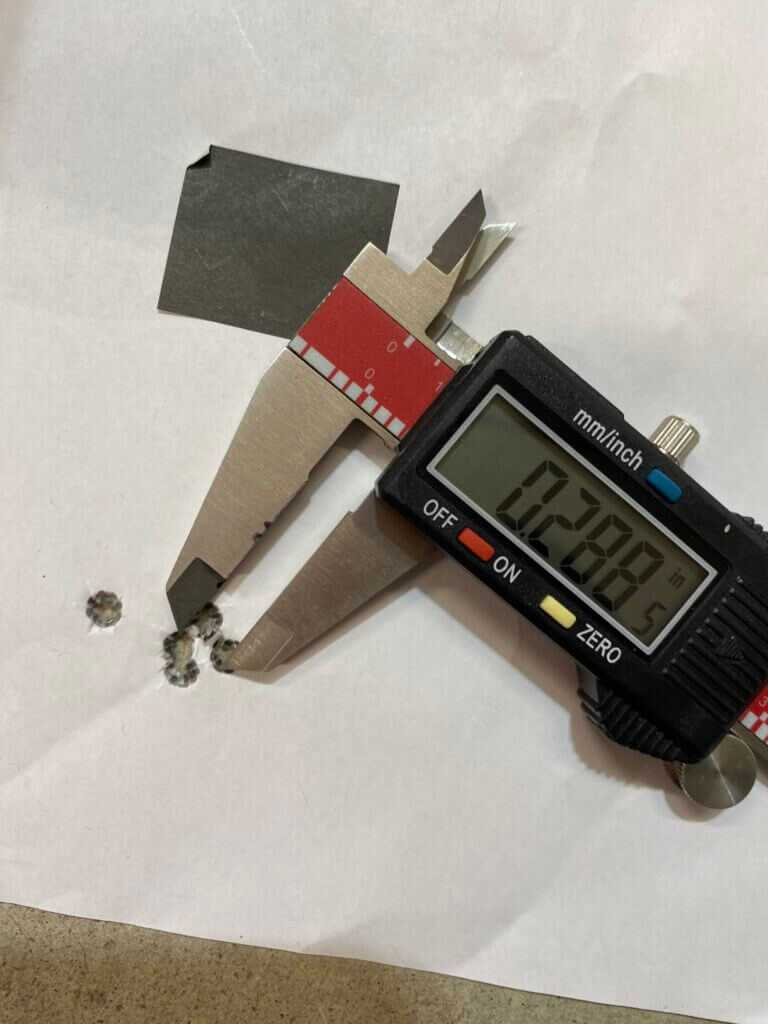
But…. I do this all the time and have done this for a long time, as a profession. And a good shooter knows when he is on, and when he is not on. Sometimes it just isn’t your day. If we had more test time with this rifle, I can almost guarantee it does 1/3rd MOA as a mechanical accuracy standard. How?

Because first of all, it was snowing on and off, and colder than hell. Second, I know me, and it wasn’t my best day. Third, I’m still shooting left-handed. Fourth, and this is a big one, almost all of our stringing outside the 1/3rd size was left to right. Which is consistent with what I was seeing in the scope, heartbeat. Heartbeat, if you pay attention, almost always moves your crosshairs left to right. How do you fix it? Be in better shape, and or be comfier. Neither of which was an option on Tuesday. And 5th, group size consistency. Every one of our really good groups had 4 rounds at or under 1/3rd MOA, with a single flyer moving it up to over ½ MOA. More often than not, that is the shooter, not the gun. I do my best, and call them honest. Never once has that erred to I think this gun does better than I can prove, until today.
Lone Star Armory is making some very impressive weapons and is worth a look. It has a premium price tag, but it gets you a premium blaster.

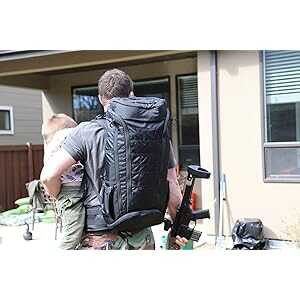
In house made Handguard???
Thats obviously an SLR Rifleworks handguard.
As a matter of fact… The whole rifle looks very similar to SLR receiver sets and rail. 🤔
Very very cool but for me, it’s out of the question.
Could you test rifles for accuracy in a lead sled and then shoot them as intended? You’d better isolate the mechanical ceiling and the realized capability based on the shooter ability and whether he’s having a “bad” day or not.
Everything about this rifle looks good, and it looks like it shoots great also. But when they start getting over $1000,00 I pay them little or no attention. Too much buck for the bang.
It’s fine for you but I would rather have an H&R single shot 30/30.
Then why read the article if you are only interested in single shot rifles?
For the same reason you read Playboy. Just because you cant have it, doesn’t mean you cant look at it.